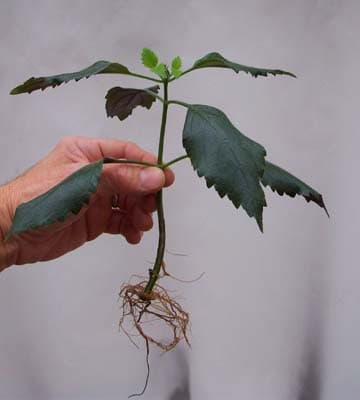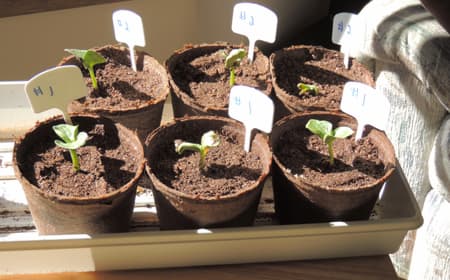Plant Propagation Methods and Techniques

About Plant Propagation
Plant propagation is the process of reproducing or creating a new plant or seedling. Like all living organisms in Nature, plant reproduction must occur for the species to survive. Nature provides a variety of ways to do this in the plant world. Different species propagate, or reproduce, in different ways. Unlike the animal world, you can find plants propagated in many ways. Pretty amazing, huh!?!
Plant propagation techniques are important in gardening, whether outdoors, or with your indoor houseplants. When you have a great plant, and you want to create a new one “just like it” for yourself or a friend, you need to know about plant propagation. Here are the most common methods and principles of plant propagation…..read on!
Plant Propagation Methods
There are several plant propagation methods and techniques. Seeds are the most common way that plants reproduce. Some plants can only be propagated one way However, many plants can be propagated using two, or more methods. For example, roses can be propagated by rooting cuttings and by seeds.
Listed below are the ways plants can be propagated.

Seeds, The Most Common Form of Plant Propagation
Seeds are by far the most common means of plant propagation. The vast majority of plants in the world produce seeds.
As avid gardeners, you and I often take seeds for granted. Each year we go online, search seed catalogs, and visit garden centers, in search of a treasure trove of our favorite seeds.
Cuttings and Rooting Plants
This is the second most common form of plant propagation. Some people refer to this method as “cloning” because it produces an identical new plant with the exact same DNA as the mother plant. At times, this can be the most difficult plant reproduction technique. Sure, there are lots of plants you can easily and successfully propagate by cuttings. Then, others are more difficult. For example, roses require a more controlled environment and protection during the “cutting” stage. Remember, cuttings demand more attention.
A good candidate for cuttings, is a healthy plant, with young and soft wooded new growth. Cut the end of a young stem, generally three to four inches long. Look for a stem that does not have a flower or a flower bud. If there are buds, remove them and the bottom leaves. There should be four to six healthy leaves on the cutting.
Did You Know? Pumpkins can be propagated by cuttings where secondary roots have formed.
More on propagation from cuttings and rooting
Also see: Rooting Houseplants
Plant Division and Separation of Roots
Plant division and separation of roots are common plant reproduction methods. It’s easy. Plants that can be propagated in this manner, are usually transplanted easily. With just a little love and attention for a few weeks after transplanting, they will quickly thrive n their new home.
Grafting
Grafting is not true plant propagation. It is not the recreation of another plant, but is the transplanting of part of an existing plant onto another existing host plant. In this sense it does not create a new plant. Grafting is however, a common practice.
Home gardeners who have limited space often use this method for fruit crops. You can for example, graft a number of varieties of apple onto one host plant. Some people have grafted up to seven varieties onto a single tree. For those who try this, you can have a different apple every day of the week from a single tree!
Layering
Layering is a plant propagation technique, where a branch or stem, branch or shoot, comes in contact with moist garden soil and takes root. Once it is rooted, the stem can be cut below the point where it is rooted. This new plant, genetically identical to the parent plant, is then planted in another location.
Shoots and Runners
Some plants will send out shoots, or suckers. If you dig them up, they have begun to develop a root system. They can be easily transplanted.
Some plants produce runners, with tiny little offspring attached. The offspring already has some roots. The babies are readily transplanted to create a new plant that is genetically identical to the mother plant.
Bulbs and Corms
A wide variety of flowers grow from bulbs and corms. The mother bulb, or corm, grows smaller bulbs as offshoots. Pull bulbs in the summer after the plant has died back. Separate the smaller bulbs from the mother bulb. Replant the bulbs in the fall with a bulb fertilizer to help your new plant grow.
Please support our site. Shop for:
- rmmatthews100@hotmail.com
- 585-721-6528
- Rochester, NY
©1999-2024 GardenersNet.Com, All Rights Reserved

